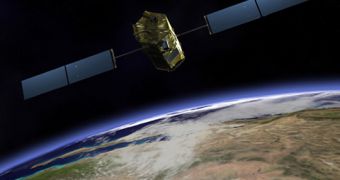In the light of the latest dispute over the impact of the carbon dioxide on the global warming and the fate of the planet's climate, NASA is poised to send a new probe set to provide accurate measurements on the levels and dynamics of CO2. This specific aspect, namely how much CO2 exists in the atmosphere and which percentage is actually absorbed back in, is what scientists lack in order to develop a comprehensive CO2 model and devise proper plans to counteract the negative effect of the greenhouse gas.
Once the carbon dioxide makes it into the atmosphere, there's not much left to do, either by humans or by nature, to reverse the process. The oceans, the soil or plants are able to absorb it, but it is a long, slow process which can hardly cope with the release rate of the gas. It is believed that only 3% of the CO2 amount is generated by humans, but it seems that it's more than enough in order to tilt the environmental scale in an undesired way.
Here's where NASA's Orbiting Carbon Observatory probe (OCO) may come in handy sometime early next year. "We will uncover all kinds of patterns and cycles in carbon dioxide that people never thought existed. It'll be just like when the first ozone measurements were made," shared project scientist Chip Miller from the Jet Propulsion Laboratory in Pasadena, California, cited by Discovery. "We get at the question of the sources of carbon dioxide and see how much is pulled out (of the atmosphere) by land and how much by seas."
"Our goal is to identify, on regional scales, where this atmospheric CO2 is actually going," explained Ralph Basilio, the deputy project manager. The $270 million OCO will do this by flying (together with other five monitoring probes) in the opposite direction to that of the Earth's rotation, in 16-day long cycles in synchronization with the Sun, from an altitude of 777 km (483 miles) above the planet's surface. The data will be relayed daily to a collecting facility in Alaska, then to Goddard and JPL, for processing purposes.

 14 DAY TRIAL //
14 DAY TRIAL //